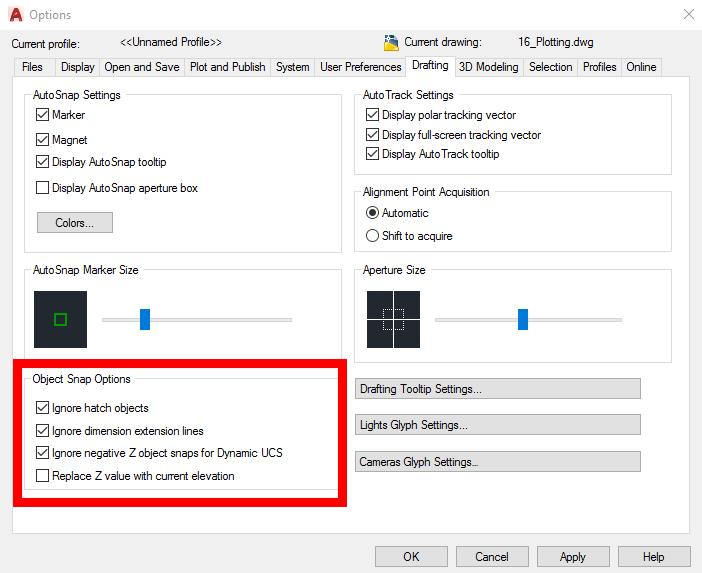
I
ntroduction:
AutoCAD, the cornerstone of computer-aided design (CAD), continually evolves to provide architects, engineers, and designers with tools that enhance precision and efficiency in the design process. Among its vast array of features, enabling “Snap to Hatch” stands out as a powerful capability that streamlines the drafting and editing of hatch patterns within drawings. This comprehensive article delves into the intricacies of enabling Snap to Hatch in AutoCAD, exploring the functionalities, applications, and transformative impact this feature has on achieving precise and visually consistent designs.
Understanding Snap to Hatch in AutoCAD:
The “Snap to Hatch” feature in AutoCAD allows users to snap to specific points or elements within a hatch pattern during drafting or editing. This capability enhances the precision of aligning and referencing objects in relation to hatch patterns, ensuring that elements within a drawing maintain accurate spatial relationships. By enabling Snap to Hatch, designers gain a nuanced level of control over the placement and modification of hatch patterns, contributing to the overall accuracy and professionalism of their drawings.
Key Features and Functionalities:
- Precise Alignment and Referencing: Enabling Snap to Hatch facilitates precise alignment and referencing of objects in relation to hatch patterns. Designers can easily snap to key points within a hatch, ensuring accurate placement of objects and maintaining the desired visual aesthetics.
- Efficient Editing of Hatch Patterns: During the editing process, Snap to Hatch streamlines the modification of hatch patterns. Users can snap to specific points within the hatch, making adjustments or extending the pattern with precision, enhancing the overall efficiency of the editing workflow.
- Snap to Hatch Points: The Snap to Hatch feature allows users to snap to defined points within the hatch pattern. This includes snapping to hatch boundaries, intersections, or specific points within the hatch, providing a granular level of control over object placement and alignment.
- Consistency in Design Elements: Enabling Snap to Hatch ensures consistency in the placement of design elements, contributing to the overall visual coherence of the drawing. This feature is particularly valuable when working on projects that require meticulous attention to detail and alignment.
Applications of Enabling Snap to Hatch:
- Architectural Floor Plans: In architectural drawings, enabling Snap to Hatch is invaluable for creating precise floor plans. Designers can accurately place walls, doors, and windows in relation to hatch patterns representing various materials or floor finishes, ensuring an accurate representation of the design.
- Landscaping and Site Plans: For landscape architects and designers working on site plans, Snap to Hatch is crucial for accurately placing vegetation or features within hatch patterns representing terrain, grass, or other landscaping elements. This level of precision enhances the visual clarity of site plans.
- Mechanical and Engineering Drawings: In mechanical and engineering drawings, where hatch patterns are often used to represent materials, enabling Snap to Hatch ensures precise alignment of components and annotations. This is essential for maintaining accuracy in manufacturing or construction processes.
- Interior Design and Detailing: Interior designers benefit from Snap to Hatch when creating detailed drawings that involve various materials and finishes. The feature enables accurate placement of furniture, fixtures, and other interior elements in relation to hatch patterns representing floor coverings or wall materials.
Optimizing Workflow with Snap to Hatch:
- Enabling the SNAPMODE System Variable: Snap to Hatch is controlled by the SNAPMODE system variable. Ensure that SNAPMODE is set to 1 to enable Snap to Hatch. Users can access this setting through the command line or the Snap mode button on the status bar.
- Adjusting Snap Spacing: Users can further optimize Snap to Hatch by adjusting the SNAP spacing. The SNAP spacing determines the distance between snap points, and adjusting this value based on the project requirements enhances the precision of snapping to hatch patterns.
- Leveraging Object Snaps: Object snaps complement Snap to Hatch by providing additional precision during drafting or editing. Designers can use object snaps to snap to specific points, such as endpoints or intersections, within hatch patterns, enhancing accuracy in object placement.
- Utilizing Polar Tracking: Polar Tracking, when combined with Snap to Hatch, enhances the efficiency of drafting. By aligning objects with polar angles and snapping to hatch patterns simultaneously, designers can create drawings with a high degree of precision.
Conclusion:
In conclusion, enabling Snap to Hatch in AutoCAD is a game-changer for designers seeking unparalleled precision and control over the placement of objects in relation to hatch patterns. This feature, embedded in the rich tapestry of AutoCAD functionalities, empowers architects, engineers, and designers to achieve meticulous and visually consistent designs across various disciplines. As AutoCAD continues to evolve, the emphasis on features like Snap to Hatch underscores the software’s commitment to providing users with tools that transcend traditional drafting boundaries. Embrace the power of enabling Snap to Hatch, and witness the transformation of your AutoCAD experience into a journey of precision, efficiency, and creative exploration within the vast landscape of CAD design.